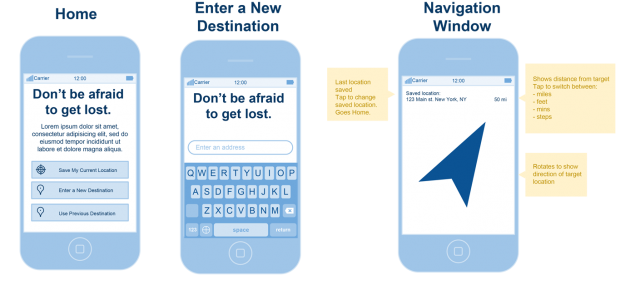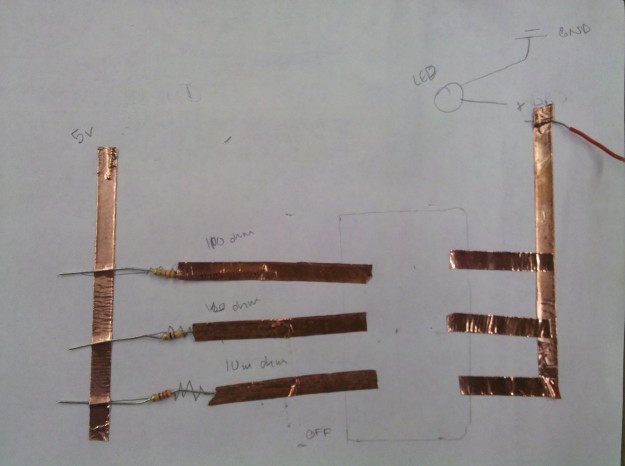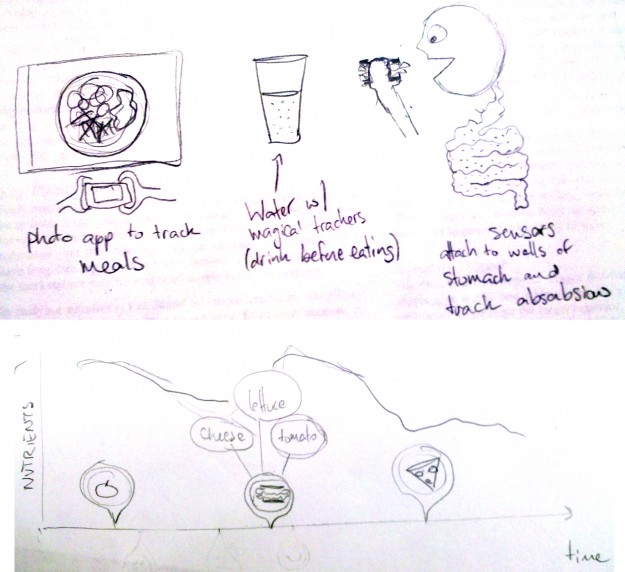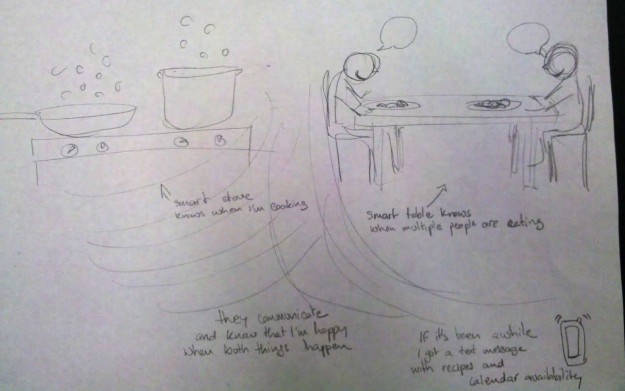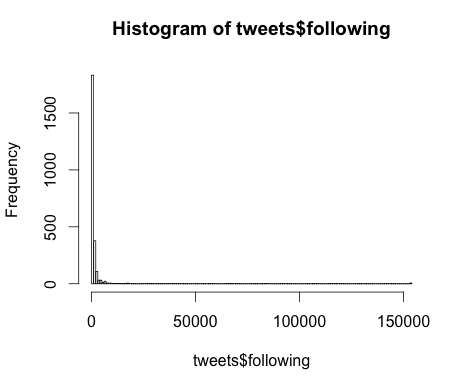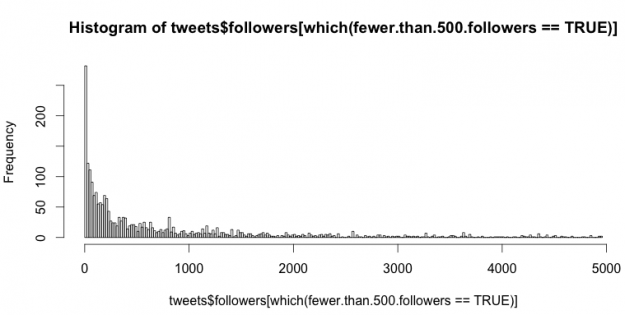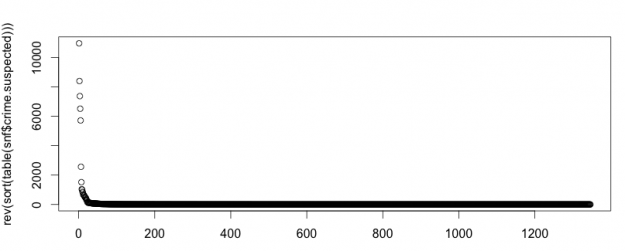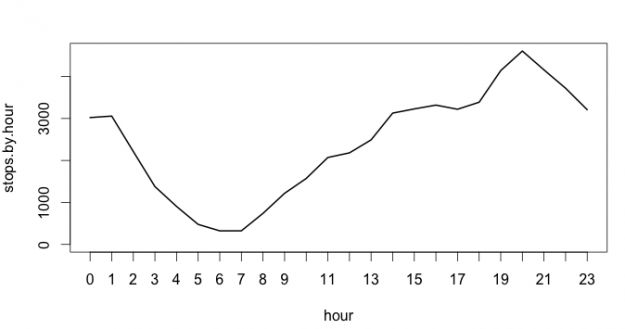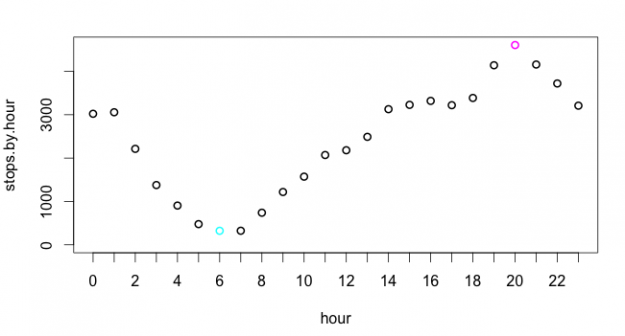This weekend were to identify 2 systems, describe and diagram them. I’m interested in possibly doing a project around identifying moods and their triggers. There are a few apps and web services out there that help users keep a log of their feelings and moods. They require a user to input the data manually. I wanted to look at a simpler system, used before apps and the web: the mood ring. The mood ring, popularized in the 70s, does not tell you how you are feeling directly, but it does react to changes in your body temperature which are certainly affected by your mood. What does this system look like as a graph?
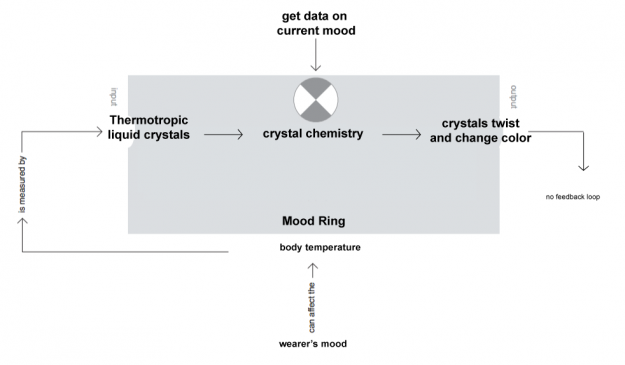
In this mood ring system, the goal is to get the data of the current mood. The thermotropic liquid crystals in the ring react to the body’s change in temperature; they are the sensors, the body, the environment. The crystal’s chemistry (the comparator) takes the input of temperature and twist themselves which changes the color of the ring (the actuation). This system does not contain a feedback loop in itself. It would require the person wearing it to watch the ring change colors and then make a decision as to whether they wanted to change something about their mood (or body temperature).
I think it could be interesting to capture this data and combine it with other data like gps location, calendar schedules, or simply a personal log.
Another system I looked at was an elevator.
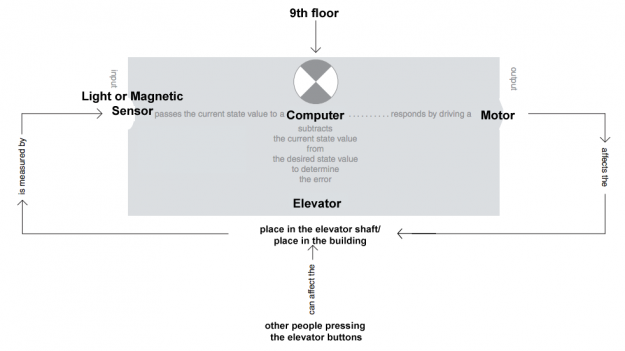
In an elevator, the goal is to get a person to the floor they desire, here it’s the 9th floor of the building. A light or magnetic sensor lets the computer know where the elevator is in the building. The computer, acting as the comparator, responds by driving the motor, the actuator. The motor can then affect the elevator’s place in the building. This is a first-order feedback loop.
I was curious about what an older elevator system, one without a computer but an elevator operator, looked like in a diagram.
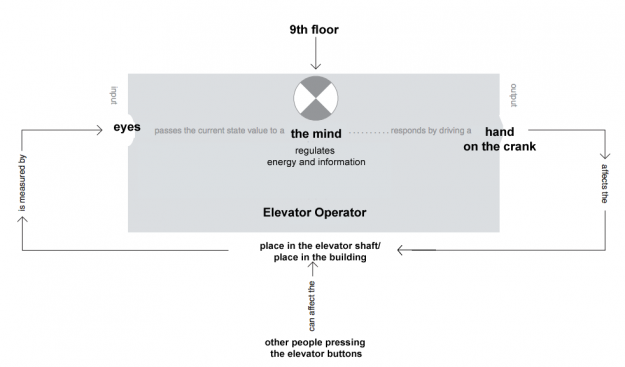
The goal, the environment, the disturbances are the same, but the system is different. The operator’s eye are the sensors, his mind, the comparator, and his hand on the crank, the actuator. In doing research for this, I found this anecdote from an elevator operator. It made me think about the automation of processes from computers and how we lose the human element of things. The human operator is the interface between the people getting in and the elevator itself. The new interface is the button. My favorite part of his story is this one:
Most people do say their floor number when they get on the elevator. In appreciation I sometimes mention “It’s time all this ‘hi’ and ‘how are you’ stuff was replaced by numbers anyway. We are right on the cutting edge of etiquette here.” One person waved goodbye as he got off the elevator and said “Fourteen.”
People are funny.
